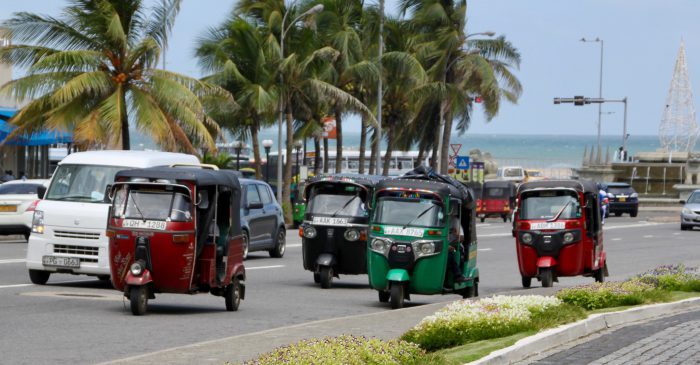The most recent BlueOrchard trip was to Sri Lanka, 4-7 June 2017. Over the course of four hot days in June, a diverse group of investors hailing from Europe and Asia joined BlueOrchard staff for an unforgettable journey in the country. We were given the opportunity to meet with local governmental leaders, microfinance institutions and entrepreneurs, all representing the microfinance value chain in Sri Lanka.
Below are some impressions from our recent journey.
Arrival Day
Guests touched down in Colombo, the capital of Sri Lanka. With flight times among the guests ranging from a few hours to more than a day, there was a brief period to freshen up a bit in our hotel before beginning the evening’s activities, which included an introduction to the impact investing industry from our Chairman Peter Fanconi and a regional overview from our Regional Manager Normunds Mizis. Afterward, guests met at a local restaurant for dinner and had the chance to begin to get to know each another.
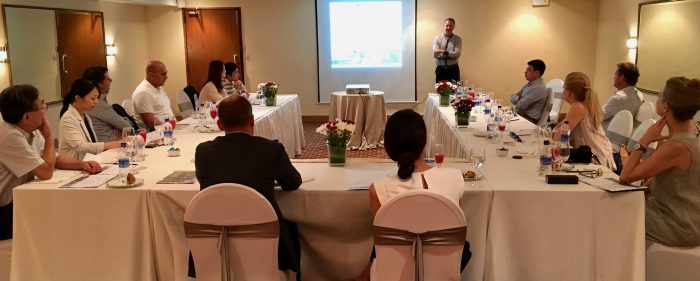
Day 1
Our first meeting took place at the Credit Information Bureau of Sri Lanka (CRIB). CRIB is the first credit bureau in the South Asian region. It was founded in 1990 by the Central Bank of Sri Lanka and the Ministry of Finance as a response to the country’s debt crisis in the 1980’s. The goal of CRIB is to put in place disciplining mechanisms in order to improve the country’s overall credit culture.
We met the management and learned of the work in Sri Lanka to develop credit-reporting systems for consumers and businesses. Such sophisticated processes don’t yet exist in many frontier markets, it was impressive to understand how the Credit Bureau functions and how it helps to strengthen lending practices – and borrowing.
CRIB is a public-private partnership, with the Central Bank holding the majority of equity, while the rest is held by lending institutions regulated by the Central Bank.
Thus, our next meeting at the Central Bank of Sri Lanka was a fluent passage. We met with the Deputy Governor and his staff, who shared with us the goals of the Central Bank, including national microfinance policies, as well as how the government liaises with international lenders and financial institutions like BlueOrchard. It was impressive to learn what important role a lender like BlueOrchard plays for the Central Bank.
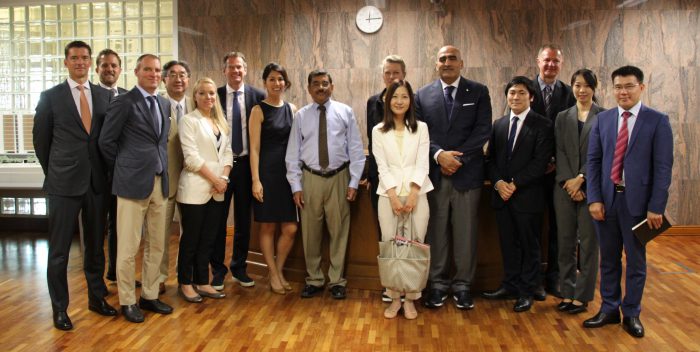
After a brief lunch in Colombo, we traveled to Rajagiriya, where we visited the Headquarters of Lanka ORIX Leasing Company, or LOLC. BlueOrchard provides funding to the LOLC subsidiary, LOLC Micro Credit (LOMC), which is ranked among the largest microfinance companies in Sri Lanka.
We were joined by the company’s CEO who described how, with the support of the financial strength of Development Finance Institutes and investors, the LOLC Group has grown to become one of the largest non-banking financial institutions in Sri Lanka, and one of the largest and most diversified conglomerates in the country.
LOMC is specializing in micro-leasing for tractors, motorbikes or trucks as well as group and individual loans reaching out to low-income clients, focusing primarily on rural areas of Sri Lanka. At present, LOMC has over USD 414mn in assets and 1,100 employees across its 129 branches. LOMC currently serves 395,000 borrowers across the country. In addition, LOMC is benefiting from the shared services introduced by the parent allowing the MFI to tap into high quality human resources and processes provided by the LOLC Group (e.g. risk management, IT, financial management, etc.).
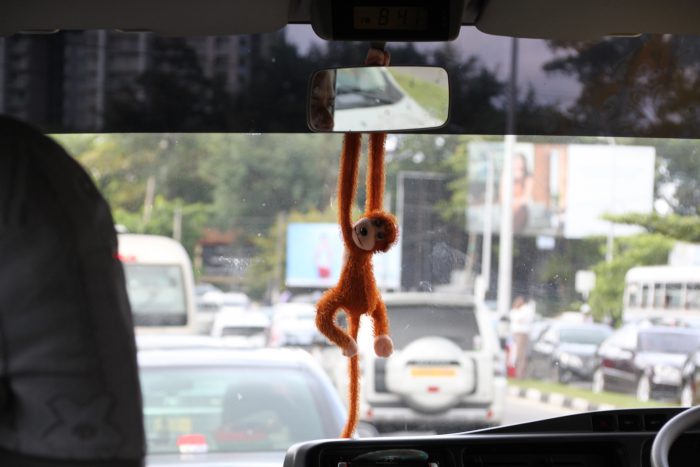
Later in the afternoon, we traveled back to Colombo to meet with the leadership of another of our microfinance partners. The company was established in 2007 as a small operation with the objective to uplift the living standards of neglected low-income households by providing them with financing for cultivation of sugar cane, paddy, and other cash crops and for self- employment projects.
Today it offers a full range of finance products including personal loans, corporate loans, leasing, hire purchase, and agricultural loans. Licensed by the Central Bank of Sri Lanka, the company is allowed to accept customer deposits across its 19 branches and 31 service centers. It currently serves 140,000 microfinance clients.
Day 2
After a whirlwind first day, we traveled into the countryside where we met with local lending offices, as well as the entrepreneurs receiving loans.
In Ethul Kotte, which is about a 45 minutes drive from Colombo, the staff gave us an understanding of how operations are conducted, from individual lending to group lending. We were informed that while many borrowers visit the local offices, the majority of the work needs to be conducted on sight, requiring frequent travel – often times close to an hour by motorcycle. Though labor intensive, this process is essential to ensure a strong relationship between the lenders and the borrowers.
We joined local staff, traveling toward the coastal town of Bentota, where we met local entrepreneurs who had borrowed micro-credits for a diverse range of businesses, including the production of incense and mushroom growing, and woodcarving, as well as entrepreneurs working in the cultivation of cinnamon.
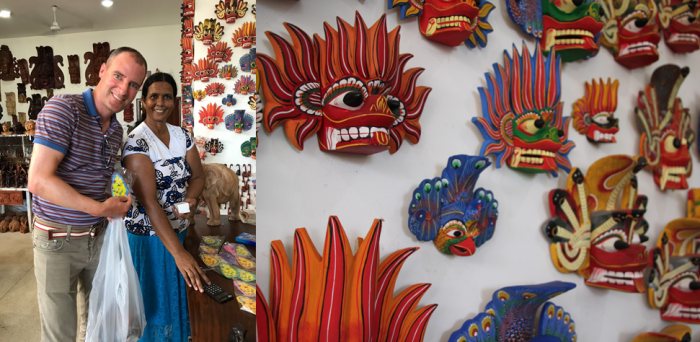
One of the entrepreneurs, a woman whose primary business is producing and selling incense sticks throughout Sri Lanka, needed money to speed up her production. Her process for making incense sticks had involved dipping wooden sticks individually into her ‘Makko’ mixture (a combustible, gummy substance mixed with essential oils and spices). This process was slow and labor intensive and she had an idea for a machine, which would speed up the process significantly. With a micro-loan of about US$100, she was able to build the machine she envisioned, and the result helped her significantly speed up the process of her incense production. This also allowed her to hire local help, and increase her business ventures to other things, including oyster mushroom production.
We also visited an entrepreneur who processed cinnamon and vanilla from their raw, plant version into usable product. With their micro-loan, they were able to purchase a tractor with a trailer, which allowed them to significantly increase their rate of harvesting and production.
Day 3
Early in the morning on day three, we were on the road again, visiting a range of entrepreneurs.
Traveling with our partners, we were invited to join a group of women in a village that had taken a group loan. Group lending serves many functions, including shared support among the women, as well as a sense of communal responsibility for the payback of loans. This helps to contribute to the surprisingly low-rate of loan default, and it helps strengthen the ability for more women entrepreneurs to access micro-credits.
In the yard of one of the borrowers, about 50 women gathered (some with their children) as they came together for their weekly loan repayment. We were able to speak with many of these women, who were running businesses that ranged from food production and catering to sewing. We could see that these women were the heart of the community, helping to provide basic income and job opportunities for the people in their village.
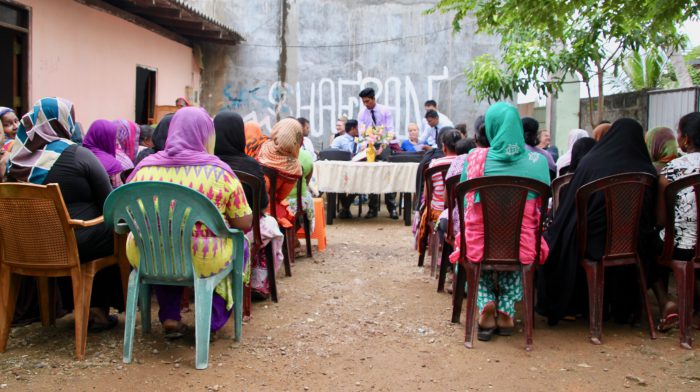
We then traveled to meet other entrepreneurs, including one who ran an operation recycling plastics, and another who constructed wooden coffins.
The entrepreneur who ran a plastics recycling facility received the loan to expand the facility. This operation includes collection of soft and hard plastics from the community, and then manual separation and sorting of the plastics. After the plastics are sorted, they can then be sold to industrial recyclers.
We ended the day meeting at the Microfinance Institution’s local field office and learning of their lending practices.
We returned to Colombo for final goodbyes before participants began their preparations to return home.
Conclusion
Though the visit was brief, the participants of the trip enjoyed an amazing journey. We learned a great deal from our hosts, enjoyed a tapestry of sights, sounds, and experiences, and we developed new relationships with professionals from around the world. Our partners demonstrated the value of BlueOrchard’s investment activities, and we were all impressed by the great work being done in Sri Lanka.
The work of microfinance lenders, as we saw, is labor-intensive, but the value it creates is immeasurable. We were all impressed with the operations we visited, and welcomed with open arms by every person we met in this beautiful country. The trip gave all of us stories and impressions we won’t forget.
By a participant of the Sri Lanka field trip.
